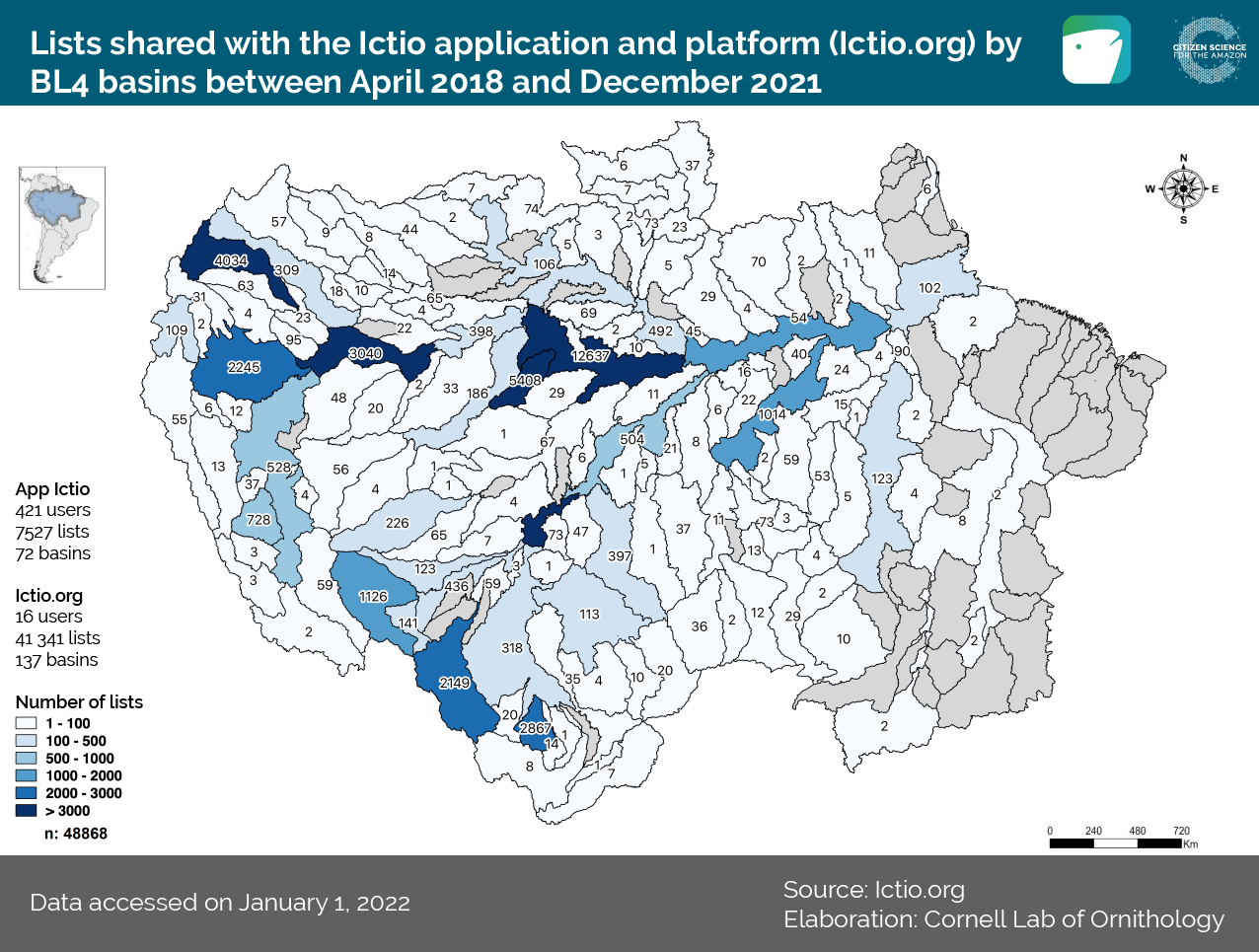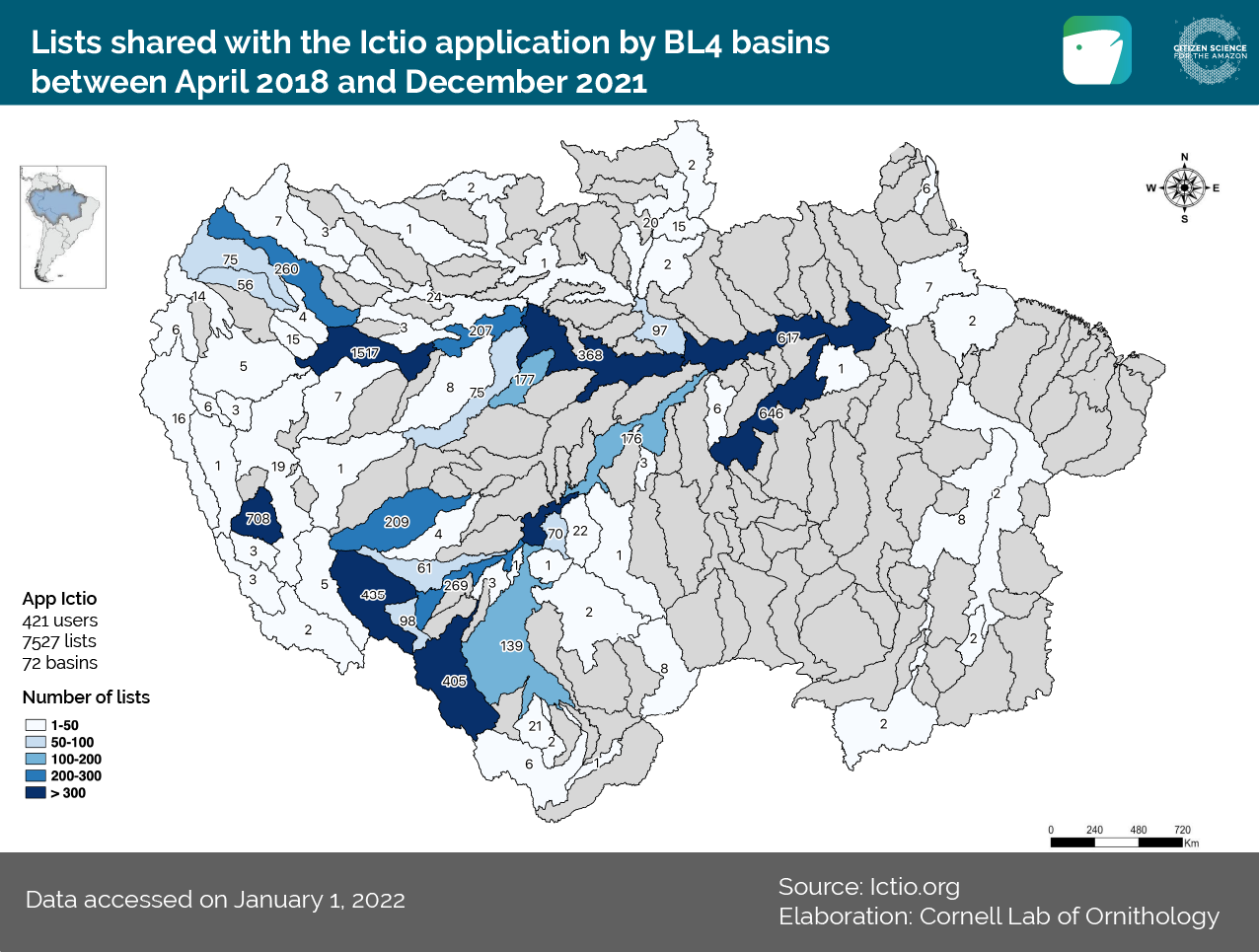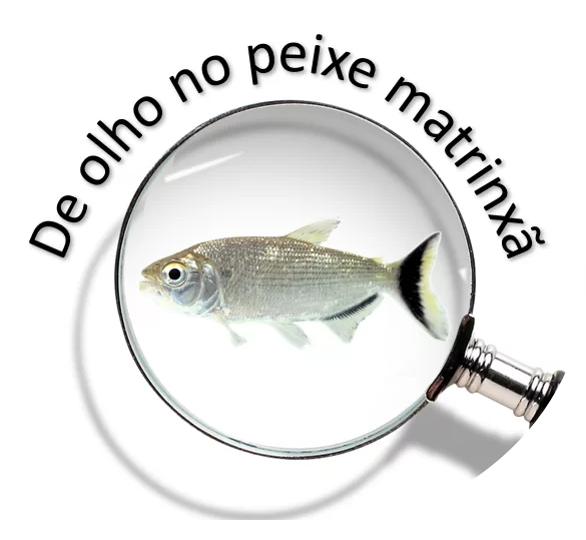
Written by: Vanessa Correa.
As of December 31, 2021, Ictio has 86,001 observations in 48,868 lists uploaded through the application and the web platform. This is the result of the 431 people and institutions working in the sharing of information. This information comes from 150 Amazonian sub-basins, which represents more than 75% of the BL4 level 199 sub-basins -the fourth of seven hierarchical levels of basin detail according to Venticinque et al. 2016 and A new geographic information system (GIS) on basins and rivers.
These results represent 22,471 more observations (an increase of 35%) compared to the data as of September 30, 2021. Compared to the outcomes in 2020 and in spite of the current pandemic, Ictio observations increased more than double recording 46,885 observations which means 120% of the total observations in the Ictio database, approximately.
Lists also have more than doubled in 2021: Ictio had an increase of 28,238 lists – approximately 137% of all the lists in our database.
Up to date, through the Ictio app, 7559 lists of fish have been recorded with more than 13 443 observations. Among the species of priority, Prochilodus nigricans continues to be the species with more observations recorded in more than 20% of sent lists. Triportheus sp. and Mylossoma sp take second place, present in 11.6% and 10.8% of the lists respectively. (see the common names in the glossary below).
The outcome obtained in 2021 took off due to the activities carried out by the partner organizations, which were gradually returning to fieldwork, following COVID-19 prevention protocols at all times. We have noticed an increase in the number of users and reconnection of the old users who are enjoying the new updated version of Ictio 3.0 [link to download].
We also have news on the photos and their publication. The photos sent through the app are now available in the new version of the website Ictio.org, where you can have free access to them. Users can consent to their names being associated with the photos by using the app. For the users who prefer not to associate their names with the data and photographs, they will appear anonymous. Users can change this setting in the app’s main menu, go to Settings, and enter the option Name Associated with your Records, where they can choose if they would like their names to be revealed.
Relevant information on 2021 records
- The first 2021 records were five lists of fish that included Triportheus sp., Curimatidae, Pseudoplatystoma sp., Brachyplatystoma rousseauxii, Fish sp., Prochilodus nigricans, Pimelodus sp. and Anostomidae . These records were made in the Amazon basin (above Jandiatuba) in Loreto, Peru, and Madeira (above Jamari) in Rondonia, Brazil.
- The last 2021 records corresponded to lists of fish that included Mylossoma sp., Salminus sp., Zungaro zungaro, Prochilodus nigricans, Brycon sp. in the Beni river basin (above Madidi) in Bolivia.
- Among the priority species, Prochilodus nigricans had the majority of sightings during 2021, followed by Triportheus sp. and Anostomidae family.
- The person with more presence in the networks uploaded 283 checklists in the Amazon basin (above Jandiatuba) and his main observations were on Triportheus sp. Mylossoma sp. and Prochilodus nigricans. For common names see the glossary below.
- Amazonas (above Jandiatuba) is the basin with more lists in the year, having 653; followed by Amazonas (between Negro and Xingú), with 522 uploaded lists.
Pictures showing data as of December 2021.
The BL4 Basin Scale Basic Database is available for download at Ictio.org.

Figure 1. Ictio App + Ictio Upload data. From April 2018 to December 2021, Ictio collected 48,868 lists uploaded through the application and the website with a total of 86,001 observations. This data comes from 150 Amazonian sub-basins, which represent more than 75% of all BL4 199 sub-basins (Venticinque et al. 2016).

Figure 2. Ictio App data - From April 2018 to December 2021, Ictio collected 7,558 lists of fish with 13,443 observations recorded through the Ictio app. This data come from 72 Amazon sub-basins and represent more than 36% of the 199 BL4 level sub-basins (Venticinque et al. 2016).

Figure 3. Observations by species in the app. - Of the 13,443 observations of fish shared through the Ictio app, 10,960 (82%) are from the 30 priority species. The rest, 18% (2,483 observations), are from the “Fish sp.” category, which collect all the observations of fish not listed as priority in the application.
Among these species, we classified the 10 species with more observations, among which makes a total of 7,498 observations. Among the priority species, Prochilodus nigricans is the species that has more observations, followed by Triportheus sp. This information was generated from the records of 422 Ictio users. For common names see the glossary below.
Know the genera or scientific names and common names by country!
- Anostomidae sp.: Ruta (Bolivia); aracu, aracu cabeça-gorda, piau (Brazil); lisa, cheo, guaracu (Colombia); lisa, tanla (Ecuador); lisa (Peru).
- Brachyplatystoma rousseauxii: Dorado (Bolivia); dourada (Brazil); plateado, dorado (Colombia); silver (Ecuador); dorado, zungaro dorado (Peru).
- Brycon sp.: Yatorana, mamuri, yaturana, or matrinchan (Bolivia); jatuarana or matrinxã (Brazil); sábalo, sabaleta, zingo (Colombia), sábalo, mahuaso, katupa or handia (Ecuador) and sábalo (Peru).
- Colossoma macropomum: Pacú, tambaqui (Bolivia); tambaqui (Brazil); cachama negra, cherna, Gamitana (Colombia); paco (Ecuador); gamitana (Peru).
- Curimatidae sp.: Llorona, branquiña (Bolivia), branquinha (Brazil), llorón, chillón, branquiña (Colombia), sardine (Ecuador), chío chío, yahuarachi, llambina (Peru)
- Mylossoma sp: Pacupeba (Bolivia), pacu comum (Brazil), and palometa (Colombia, Ecuador and Peru).
- Piaractus brachypomus: Tambaqui, pacu (Bolivia); pirapitinga (Brazil); paco, cachama blanca (Colombia); cachama blanca ( Ecuador); paco (Peru).
- Pseudoplatystoma sp: Pintado (Bolivia), surubim (Brazil), pintadillo rayado (Colombia), pintadillo tigre (Ecuador), and doncella (Peru).
- Prochilodus nigricans: Sábalo (Bolivia); curimatã, curica or papa-terra (Brazil); bocachico (Colombia and Ecuador); challua (Ecuador) and boquichico (Peru).
- Pimelodus sp.: Griso (Bolivia); mandi (Brazil); jetsco, bearded, picalón (Colombia); picalón or buluquique (Ecuador); and catfish cunchi, catfish, cunchi or zungaro cunchi (Peru).
- Salminus sp.: Salmon, dorado de escama (Bolivia), dourado (Brazil), salmon (Colombia), Gual (Ecuador), sábalo macho, sábalo (Peru).
- Triportheus sp.: Panete (Bolivia), sardinhas (Brazil), sardinas (Colombia and Peru), and pechón (Ecuador).
- Zungaro zungaro: Muturo, catfish (Bolivia); jaú, pacamão, zúngaro, toad catfish, jau poca, jundía, jundiaçu, manguriú, pacamao (Brazil); amarillo, zúngaro, pejenegro, chontaduro, pacamú (Colombia); sapote (Ecuador); zúngaro, cunchimama, llausa (Peru).





